Rajasthan, celebrated for its majestic forts, royal heritage, and vast deserts, is also a treasure trove of wildlife. The wildlife sanctuaries in Rajasthan offer an exceptional opportunity to explore the state’s diverse natural landscapes, ranging from the arid expanses of the Thar Desert to the verdant Aravalli ranges. These sanctuaries are home to a wide array of wildlife, including the majestic Bengal tiger and an assortment of vibrant bird species. They serve as crucial refuges for endangered animals and provide visitors with a unique chance to experience the region’s rich biodiversity and stunning natural beauty.
Top 10 Wildlife Sanctuaries In Rajasthan
Here’s a curated list of the top 10 wildlife sanctuaries in Rajasthan for an unforgettable wildlife experience.
1. Kumbhalgarh Wildlife Sanctuary
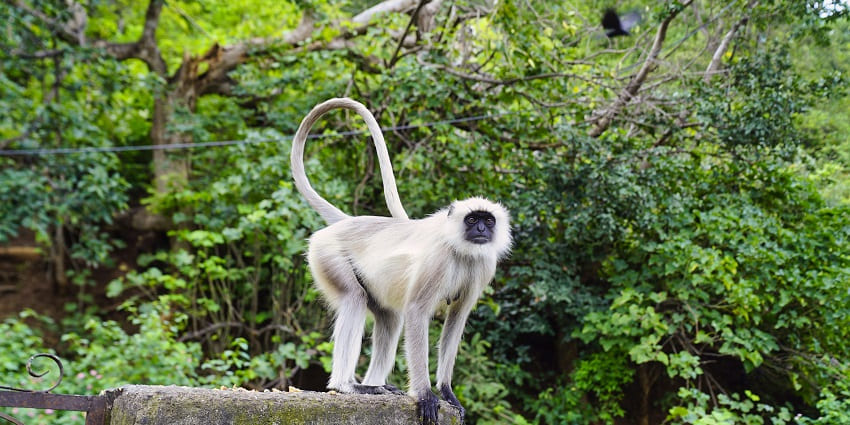
Photo: Deeksha vyas / Wikimedia Commons
Kumbhalgarh Wildlife Sanctuary surrounds the magnificent Kumbhalgarh Fort and covers an area of 578 square kilometres. The sanctuary is home to many wildlife, including wolves, leopards, sloth bears, hyenas, and deer. It is one of the few places in Rajasthan where you can spot wolves. In addition to the wildlife, the sanctuary is known for its diverse flora, including bamboo and dhok trees, which provide shelter for the animals. Visitors can enjoy jeep safaris, trekking, and horse riding through the sanctuary’s rugged terrain and scenic beauty. The panoramic views of the Aravalli Hills make this one of the best wildlife sanctuaries in Rajasthan.
Location: Rajsamand, Rajasthan
Entry Fee: ₹100
Timings: 7 AM – 5 PM
Suggested Read: Night Safari In Kumbhalgarh
2. Mount Abu Wildlife Sanctuary

Photo: Julie Marsh / Unsplash / Image For Representation Only
Mount Abu Wildlife Sanctuary, located in the Aravalli range, is one of the popular wildlife sanctuaries in Rajasthan, covering an area of 288 square kilometres. The sanctuary is known for its varied wildlife, including leopards, sloth bears, wild boars, and langurs. It is also a haven for birdwatchers, with more than 250 species of birds, including the grey jungle fowl and eagles. The flora here is equally impressive, with more than 800 species of plants, including orchids and medicinal plants. Visitors can explore the sanctuary through guided treks or enjoy the scenic beauty of the surrounding mountains and valleys.
Location: Mount Abu, Rajasthan
Entry Fee: ₹300
Timings: 9 AM – 5:30 PM
3. Sita Mata Wildlife Sanctuary
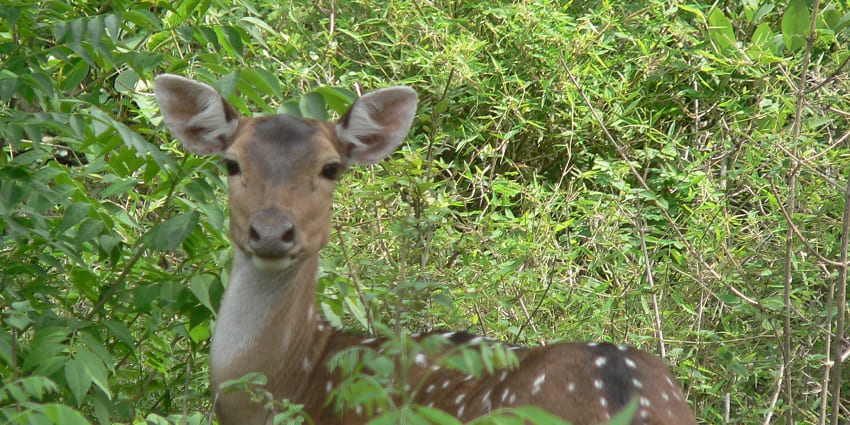
Photo: jackol / Wikimedia Commons / Image For Representation Only
Sita Mata Wildlife Sanctuary is one of the top wildlife sanctuaries in Rajasthan. It covers 423 square kilometres and is located in the southeastern part of Rajasthan. The sanctuary is rich in biodiversity, with lush forests and numerous streams and waterfalls. It is home to leopards, flying squirrels, spotted deer, and the Indian giant squirrel. The sanctuary is also steeped in mythology, as it is believed to be the place where Goddess Sita stayed during her exile. Visitors can trek through the dense forests or explore the sanctuary’s serene beauty while spotting wildlife along the way.
Location: Pratapgarh, Rajasthan
Entry Fee: ₹50 (for Indians), ₹250 (for foreigners)
Timings: 6 AM – 6 PM
Suggested Read: Jungle Safari In Rajasthan
4. Tal Chhapar Wildlife Sanctuary
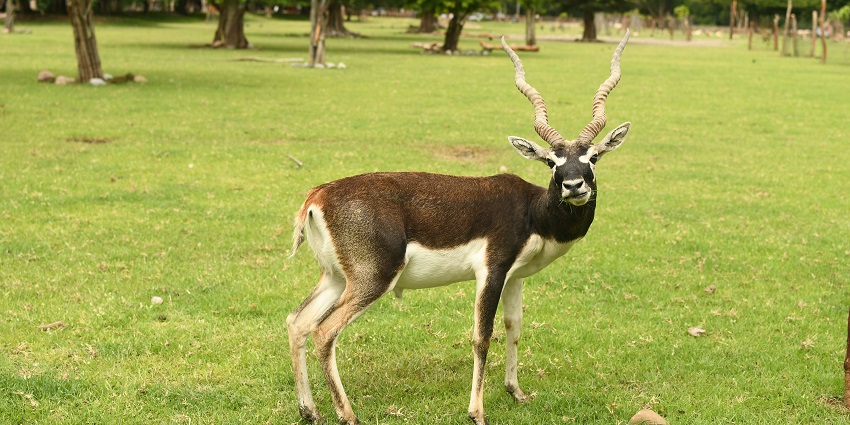
Photo: Gonzalo Gonzales / Unsplash / Image For Representation Only
Tal Chhapar Wildlife Sanctuary, located in the Shekhawati region of Rajasthan, is known for its vast grasslands and blackbucks. The flat, open landscape of the famous Rajasthan Wildlife Sanctuary makes it an ideal spot for wildlife enthusiasts and photographers, offering spectacular views of animals in their natural habitat. Apart from blackbucks, the sanctuary is home to a variety of birds, including harriers, falcons, and eagles, especially during the migratory season. The peaceful environment of Tal Chhapar provides a tranquil setting for birdwatching and nature walks.
Location: Churu, Rajasthan
Entry Fee: ₹20
Timings: 6 AM – 6 PM
5. Bassi Wildlife Sanctuary
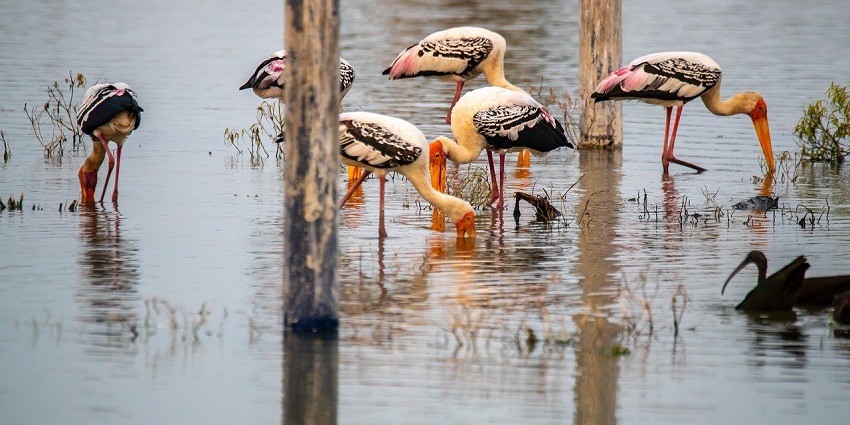
Photo: breaklessbiker / Pixabay / Image For Representation Only
Bassi Wildlife Sanctuary, located near the historic Chittorgarh Fort, spans 152 square kilometres and offers a rich diversity of wildlife. The sanctuary is home to animals like leopards, wild boars, antelopes, and jackals. It is also a birdwatcher’s paradise, with several migratory and resident bird species flocking to its lakes and reservoirs. Visitors can explore the sanctuary through jeep safaris and trekking routes. The nearby Bassi Dam adds to the sanctuary’s natural beauty, providing picturesque views of the surrounding landscapes.
Location: Chittorgarh, Rajasthan
Entry Fee: ₹50
Timings: 7 AM – 5 PM
Suggested Read: Places To Visit Near Chittorgarh
6. Todgarh-Raoli Wildlife Sanctuary
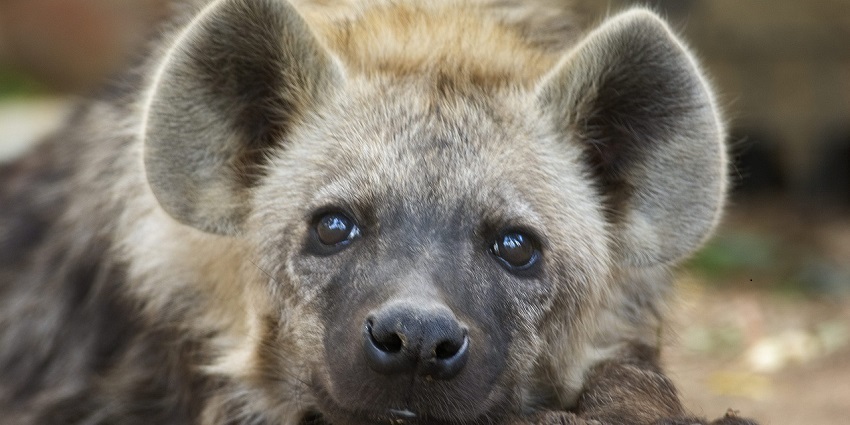
Photo: IanZA / Pixabay / Image For Representation Only
Todgarh-Raoli Wildlife Sanctuary, located in the Aravalli ranges, spans 495 square kilometres and is a haven for wildlife enthusiasts. The sanctuary is home to leopards, hyenas, antelopes, and various bird species. Its rugged terrain, dense forests, and streams provide an ideal habitat for wildlife. This is one of the top popular Rajasthan wildlife sanctuaries among adventure lovers, offering trekking and jeep safari experiences. Visitors can explore the scenic landscapes and observe wildlife in their natural surroundings, making it a perfect getaway for nature lovers.
Location: Ajmer, Rajasthan
Entry Fee: ₹100
Timings: 6 AM – 6 PM
7. Ranthambore National Park
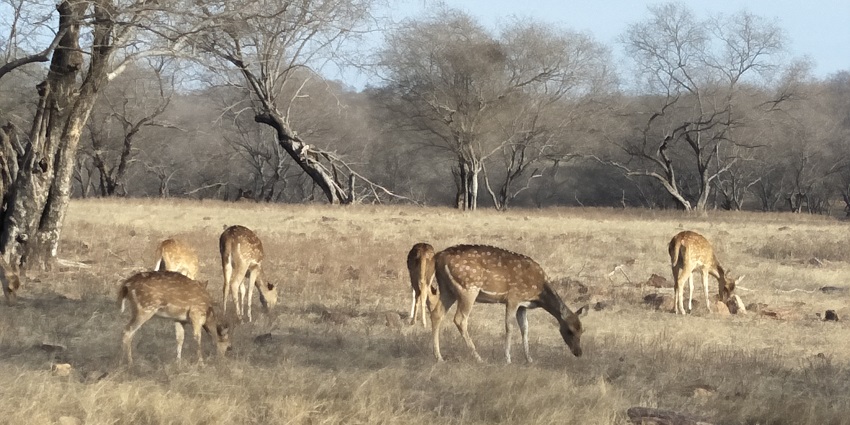
Photo: कृष्ण कान्त शर्मा / Wikimedia Commons
The stunning Ranthambore National Park covers an impressive 1,334 square kilometres. It’s renowned for its thriving population of Bengal tigers, offering one of the best chances in India to spot these majestic animals in their natural habitat. The park also features a wide variety of wildlife, including leopards, sloth bears, wild boars, and more than 300 species of birds. Adding to its allure, Ranthambore Fort, a UNESCO World Heritage Site, lies within the park’s boundaries, giving visitors a mix of wildlife and history. Safari tours in Ranthambore are popular, allowing visitors to experience the beauty of the park’s forests, lakes, and open grasslands.
Location: Sawai Madhopur, Rajasthan
Entry Fee: ₹700 (for Indians), ₹1500 (for foreigners)
Timings: 6 AM – 10 AM, 2:30 PM – 6:30 PM
Suggested Read: Ranthambore Jungle Safari
8. Sariska Tiger Reserve
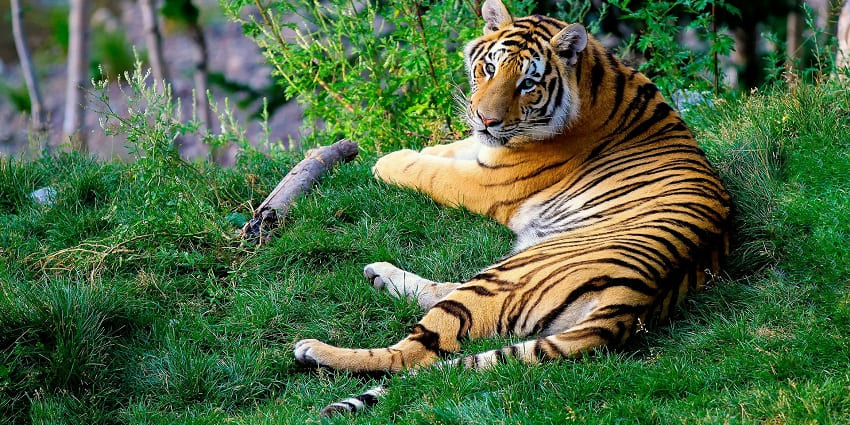
Photo: Jack Merlin / Unsplash / Image For Representation Only
Sariska Tiger Reserve, nestled in the Aravalli Hills, spans 866 square kilometres and is known for its tiger population, which has been successfully reintroduced through conservation efforts. Once a hunting ground for the Maharajas of Alwar, it is now a protected reserve where tigers roam freely alongside other species such as leopards, hyenas, wild boars, and sambars. Sariska is also home to ancient temples, including the Neelkanth Temple, and Kankwari Fort, offering visitors a unique blend of history and nature. The forested landscape, crisscrossed by rivers, provides a perfect backdrop for wildlife safaris and birdwatching.
Location: Alwar, Rajasthan
Entry Fee: ₹150 (for Indians), ₹800 (for foreigners)
Timings: 6 AM – 9:30 AM, 3 PM – 6 PM
9. Keoladeo National Park
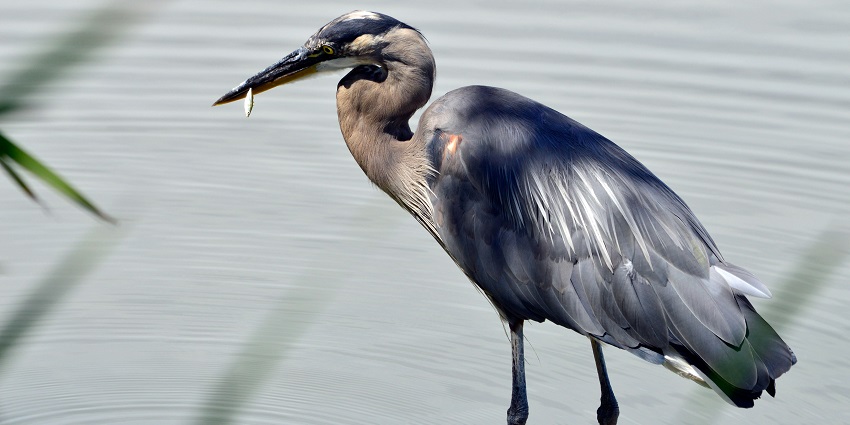
Photo: DEAN FAULKNER / Unsplash / Image For Representation Only
Keoladeo National Park, formerly known as Bharatpur Bird Sanctuary, is a UNESCO World Heritage Site and one of the most significant bird sanctuaries in the world. This 29 square-kilometre park is famous for attracting more than 370 species of birds, especially during the migratory season when birds from Siberia, Central Asia, and Europe make it their winter home. Visitors can witness rare species like the Siberian crane, painted storks, and pelicans. The park’s wetlands, dense trees, and swamps create an ideal environment for birdwatching, photography, and guided tours on foot, by bicycle, or in a rickshaw.
Location: Bharatpur, Rajasthan
Entry Fee: ₹75 (for Indians), ₹500 (for foreigners)
Timings: 6 AM – 6 PM
Suggested Read: Places To Visit In Bharatpur
10. Desert National Park
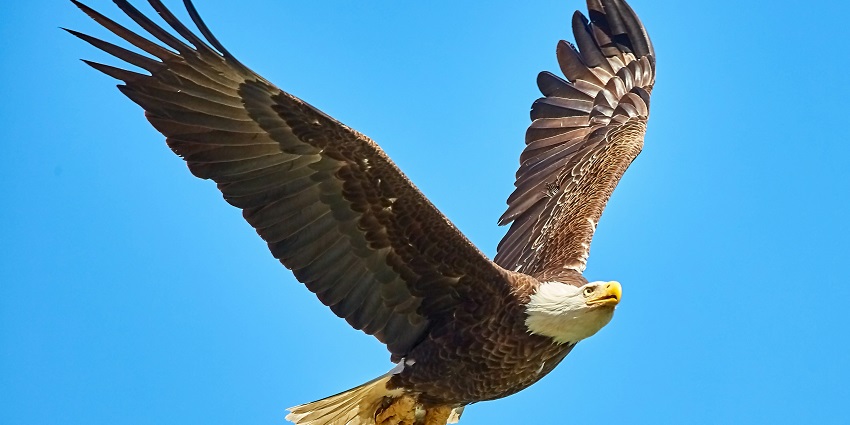
Photo: Mathew Schwartz / Unsplash / Image For Representation Only
Desert National Park showcases the stark beauty of Rajasthan’s Thar Desert. Spanning over 3,162 square kilometres, the park is a fascinating place for those interested in desert ecology. It is one of the largest national parks in India and provides a habitat for the endangered Great Indian Bustard, which is a major attraction. Apart from the bustard, the park is home to various desert creatures such as blackbuck, chinkara, desert fox, and monitor lizards. The park also has areas rich in fossil beds, dating back millions of years, which add a historical aspect to the desert’s biological diversity.
Location: Jaisalmer, Rajasthan
Entry Fee: ₹100 (for Indians), ₹400 (for foreigners)
Timings: 10 AM – 5 PM
Wildlife sanctuaries in Rajasthan offer an unparalleled experience of the state’s rich biodiversity and scenic landscapes. From the majestic tigers of Ranthambore to the vibrant birdlife of Keoladeo, these sanctuaries are a treasure trove for nature lovers and wildlife enthusiasts. Ready to explore the wild side of Rajasthan? Book your tour with TripXL today and embark on an unforgettable wildlife adventure across the sanctuaries of this royal state.
Cover Photo: Kelly R Richardson / Shutterstock


 WhatsApp
WhatsApp
 Twitter
Twitter









